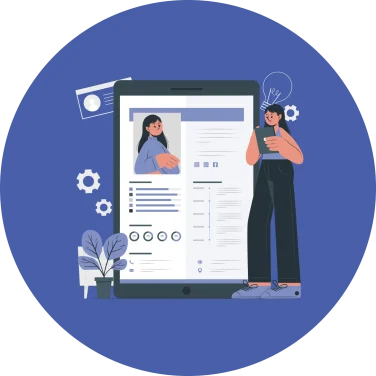Human capital management is not only about tracking employee attendance and processing payroll. In a broader perspective HR or HCM should be about focusing the HR function on achieving organisational goals which matter to business.
This involves making changes in the way the HR function is planned; this involves re-aligning HR processes, people capabilities, HR systems (HRIS/HRMS) and HR technology to ensure uninterrupted alignment with business.
Many HR organizations conduct HR functions in the same old way, expecting optimum business results. However if organizations aspire to achieve substantial results in today’s intensely competitive business landscape, they need to transform their HR function. This transformation could be an all-encompassing change where HR originations would re-look at the entire Human Capital Management function. The transformation also might look only at changing/ improving one aspect in HR such as HR delivery platform experience, HR capability development or HR insights for decision making.
Regardless of the scope of HR transformation, organizations will have to ensure achievement of 3 fundamentals to have HR functions transformed.
1- Reform HR functions
Your HR organizations should have the complete set of HR functions included into your HRMS/HRIS without having disparate payroll software or a system to automate employee information and attendance tracking. Instead HR leaders should look at capitalising on a comprehensive HR software solution that entails core and talent management HR functionalities. HR department should be reformed with efficient HR practices that eventually results in overall HR Performance. Reforming includes a complete HRMS which performs all HR functions accurately and efficiently. Reforming/restructuring the systems will deliver a congruent HR practice.
2- Revamp Experience
User experience delivered by your HRIS should be revamped if HR leaders wish to see improved user engagement in the HRIS. HR software with improved user interfaces will encompass suitable iconography, clarity and simple fronts enabling users to recognize priority information and actions at a glance. HR software with improved User Experience will minimize the number of interfaces, reducing the number of clicks. These improvements certainly will raise convenience, thus engagement levels of HR software users.
3- Reboot HR with Digitization
Like we’ve already discussed, HR is no longer an administrative task to capture employee attendance, maintain personnel information and process payroll. Instead Human Capital Management has to look at ways to delegate all core HR functions to HR software solutions and focus more on attracting, mentoring and retaining rich talent within the company. HR Software solutions cannot be on-site deployments with basic features and functionalities anymore. HR leaders need to ensure their HR systems are up to date with latest technology. HR leaders should see how they can upgrade their existing HR practices and systems with upcoming technology, how they can achieve greater levels of engagement through the HR software. Also HR leaders should now understand that HR software is the best force that could support majority of people centric decisions with real time HR insights. Continuing business growth will require more and more confidentiality, hence HR should ensure the security and confidentiality of all people data. This highlights the importance of having cloud HR software instead of on-site deployments.
Reform Revamp and Reboot are three fundamentals any organization should follow if they need to transformed HR practices for better outcomes. We will be discussing further on techniques involved in each fundamental highlighted in this post. Stay tuned.



